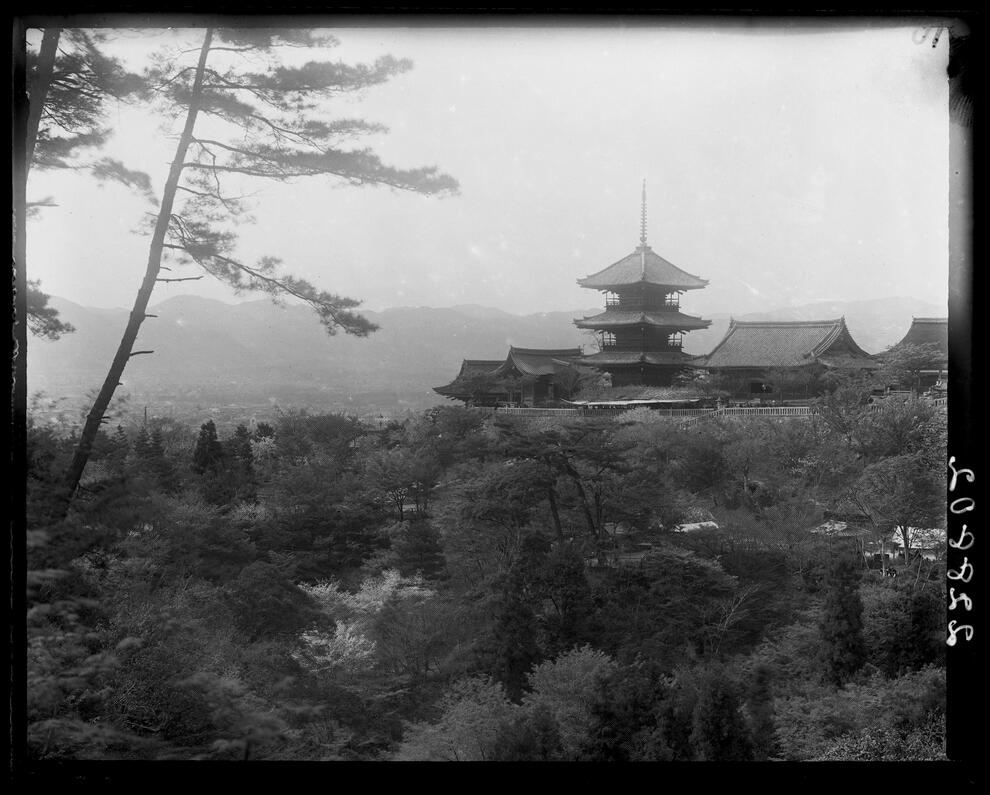Years ago as an intern at the Museum Library, one of my early projects was creating authority records for the first and second Asiatic Zoological Expeditions. These exploratory trips were done in 1916-1917 and 1918-1919 by Roy Chapman Andrews, his wife Yvette Borup Andrews and their team, and predated the famed and lengthier Third or Central Asiatic Expedition. A few years later, as a staff member, I was charged with digitizing more than 800 negatives and prints related to these same expeditions. This was a full circle moment for me, as I was able to see in detail the visual trace of the expeditions that earlier I had meticulously researched. Very recently, my supervisor casually mentioned that she had uploaded the images from the first and second Asiatic Expeditions into our new Digital Asset Management system that is currently being developed. Feeling like a mother hen, I immediately went to see them in their new online home! Besides being excited and pleased with seeing them in this new setting, I was reminded of the immense challenge the Paget Plates posed at the time of digitization. It remains my bête noir.
Andrews, Roy Chapman, 1884-1960 (Photographer)
Yvette Borup Andrews acted as the expedition photographer for these two journeys, a truly remarkable achievement considering women were not even allowed to vote at that time. She is an enormous part of the expeditions’ legacy, success, and documentation. During the digitization project for her first Asiatic Expedition images, while performing quality reviews, I noticed a pronounced cross hatch pattern on many of the scans. At first, I thought the images had been photographed from a newspaper because they had a stippled appearance, like halftone prints, as if you looked at a comic strip with a magnifying glass. Looking further, I noticed that all the handwritten negative sleeves were marked Paget or Paget plate. Curious, I did more research.
Andrews, Yvette Borup (Photographer)
The Paget process was a photography method developed by George Sydney Whitfield around 1912-1913 and distributed by the Paget Prize Plate Co.
The process utilized a series of patterned and regular black and white glass plates to create the transparencies, and then a separate patterned viewing plate was necessary for viewing. The best examples I can identify which are viewable online were taken by Australian photographer Frank Hurley during Shackleton’s 1914-1917 British Imperial Trans-Antarctic Expedition.
Andrews, Yvette Borup (Photographer)
Aha! An answer to the mysterious pattern on the glass plates! More research revealed that Yvette had used the Paget method for some of her photography on this expedition. As stated in the Andrews’s Camps and trails in China; a narrative of exploration, adventure, and sport in little-known China (1918), “The Paget natural color plates proved to be eminently satisfactory and were among the most interesting results of the expedition. The stereoscopic effects and the faithful reproduction of the delicate atmospheric shading in the photographs are remarkable.” Among the collected material being returned to the Museum from the Expedition included “150 Paget natural color plates.” Oh how I anticipated seeing these images in color! They were already strikingly picturesque in black and white but to see the cherry blossoms in that tinted color would be remarkable. Of course there was a fly in the ointment: we do not have the required viewing screen! In vain, my colleagues and I searched nooks and crannies of the Library and Archive for a serendipitously discarded box with the filter. We rechecked collection inventories. I keep my fingers crossed that the work to be done with the Memorabilia Collection (the third transformative project of the Shelby White and Leon Levy Archive Initiative – the DAMS effort is the first and an effort to redescribe the Museum’s Central Archives is another) will prove to unearth what we need. Meanwhile I have made some unsuccessful attempts to recreate the filter pattern with Photoshop. Besides my own curiosity, researchers have queried us about viewing these as intended. I am ashamed to admit I have yet to come to a satisfactory solution and they continue to haunt me. But I am very stubborn and I will persist! However, if a kind reader happens to have a Paget viewing screen laying in their attic, please let me know!
Andrews, Yvette Borup (Photographer)
This is the sixteenth post in a series about how the Library's staff is working remotely and enriching its digital collections to enhance access to researchers and the public during the COVID-19 pandemic. This entry was written by Kendra Meyer, Shelby White & Leon Levy Digital Archivist.
